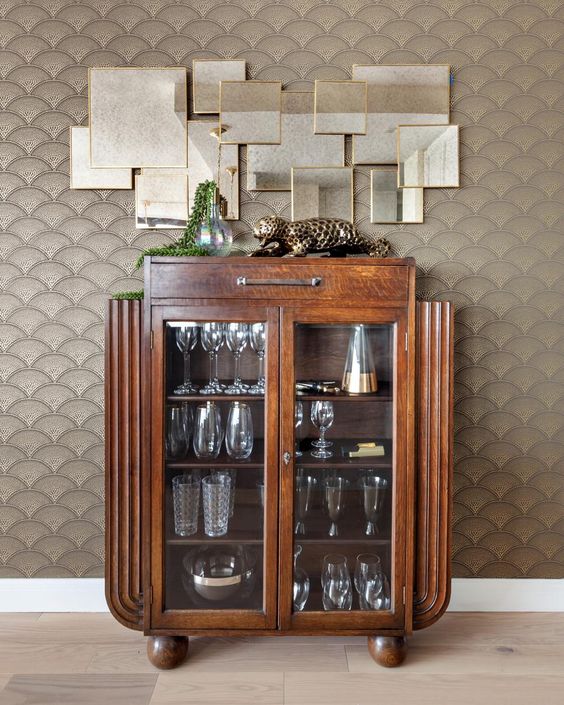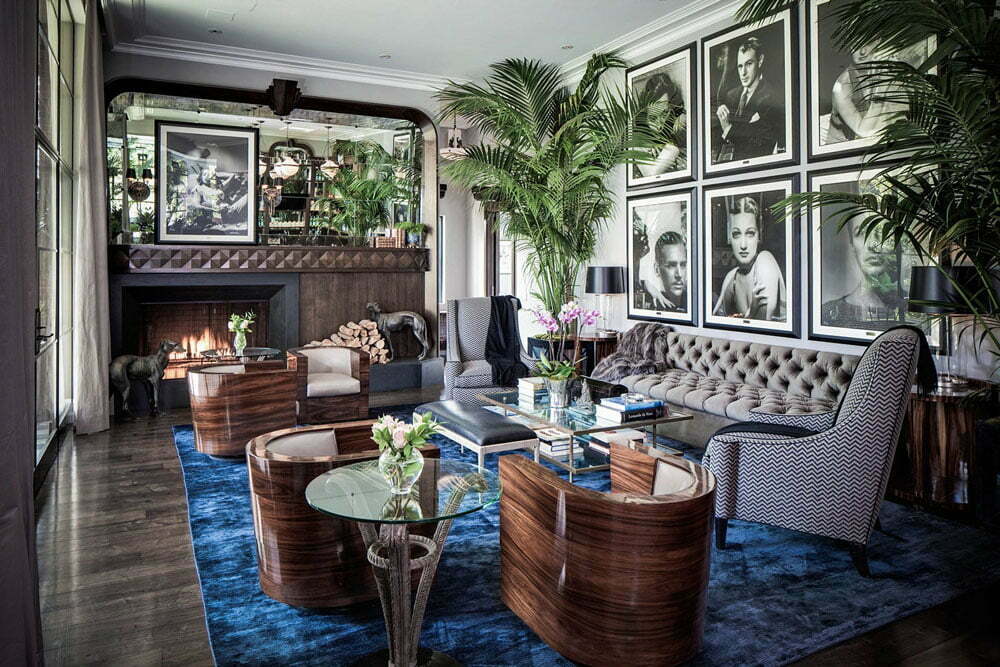In The Spotlight: Art Deco Furniture
The Art Deco period spans the roaring 1920s through to the 1930s. The style drew on deeply trenched traditions while celebrating the exuberantly modern, mechanised world. Following the First World War furniture designers embraced glamour and escapism, producing pieces crafted with exotic, high end materials.
Sources of Inspiration For Art Deco Furniture
The term coined in the 1960s isn’t necessarily referring to a cohesive style but a mixture of sources and influences varying from historic European design movements, folk art, urban imagery, Avant Garde art and Russian ballet.
Art Deco Furniture originated in 1920s Paris taking inspiration from the 1925 ‘Exposition Internationale des Arts Décoratifs et Industriels Modernes’ where French artisans came together to exhibit works that reimagined traditional designs into modern styles.
The Art Deco Movement also drew heavily on the forerunning movement Art Nouveau which was in fashion prior to the First World War. Different artists utilised different aspects of the movement such as its floral forms and linear geometric forms.
The designs also took inspiration from Egyptian imagery as the excavation of Tutankhamun’s tomb in 1922 brought much attention to the area, with imagery of scarabs, hieroglyphics and pyramids becoming very popular.

Image via Pinterest
Key Characteristics of Art Deco Furniture
Art Deco Furniture is characterised by geometric shapes and details, metal accents, exotic woods such as walnut, maple and rosewood with inlaid accents, mirrors and velvet finishes.
Popular pieces of Art Deco furniture included, console tables, display cabinets, sideboards and dressing tables, all finished with high quality wood and glamorous details.
Due to the nature of Art Deco furniture design production was generally kept to small quantities aimed at the high end luxury market. The leading manufacturers included Broadway and Heal, who crafted furniture utilising intricate veneers using maple and walnut. They promoted their pieces using the ethos of hand made luxury, with their most popular pieces including sideboards and dining table sets.
Heal & Son marketed their pieces to a wider audience, producing larger quantities of furniture in more minimal designs out of Oak, enabling them to offer a wider product range such as chairs, bookshelves and cabinets.
Key Designers
Many prominent Art Deco furniture designers came from France, where the movement first formed and went on to distinguish themselves with unique takes on the popular style.
Emile-Jacques Ruhlmann
While initially drawing on the Arts and Crafts and Art Nouveau movements, he moved towards focusing on luxury, creating designs catering to an affluent clientele. He used expensive and rare woods such as rosewood, ebony and burl, sourced from around the world.
The forms were simple, allowing the materials and craftsmanship to take centre stage and it could take up to eight months to make a single one of his designs. His exhibit at the 1925 Exposition introduced him to a number of famous clients and he designed pieces for the Rothschild family, Jeanne Paquin, Colette and Andre Tardieu, the President of the French state council.
Süe et Mare
Süe et Mare were a duo that are emblematic of the collaboration that occurred between artists as part of the Art Deco movement. Louis Süe and André Mare formed their creative partnership prior to World War I and afterwards went on to create many pieces in the Art Deco style.
In 1920 they founded the Compagnie des arts français, where they specialised in creating furnishing and interior accessory designs. Their designs were more conventional, drawing on Louis XIV style and earlier periods while also adhering to the Art Deco style. They were less focused on geometric intricacy, preferring to create highly decorative pieces by utilising sculptured floral and fruit motifs, scalloped edges and inlays of ivory and mother of pearl.
Art Deco’s Decline
While Art Deco had symbolised the height of modernity, it began to fall out of popularity with the stock market crash of 1929 and by the beginning of the Second World War was regarded with intense hostility as being a false and gaudy version of luxury. Replaced by functional, unadorned furnishing in the style of Modernism, Art Deco pieces are still prized to this day for their strength and quality and they make wonderful statement pieces in any room.

Image via Pinterest
How to incorporate Art Deco Furniture in Your Home
Add Statement Accessories
Introducing sleek statement accessories such as mirrors or pieces that incorporate mirrors into their design can have a dramatic impact on a space. Mirrors add glamour while also creating a focal point for the rest of your interior.
Look For Rich Woods
Art Deco furniture utilised expensive and high quality woods as a focal point of the style, sourcing these materials from all over the world. Searching for solid wood items complete with eye-catching geometric shaped designs or inlay made with ebony, burl walnut, maple or ash can be a wonderful addition to an Art Deco interior.
Opt For Glamorous Lighting
Sleek and glamorous lighting can provide the perfect finishing touch for an Art Deco interior. Look for pieces that incorporate intricate ornamentation and geometric details. These show stopping pieces will set off velvet accents, adding interest and depth to a room.
Here at Penderyn Antiques we have a wide range of antique furniture available, shop our range of Art Deco furniture.
To keep up to date with our latest content and news, be sure to subscribe to our newsletter. We will send the latest business updates, exclusive discounts and much more straight to your email! If you’d like more design inspiration make sure to check out our Instagram!

